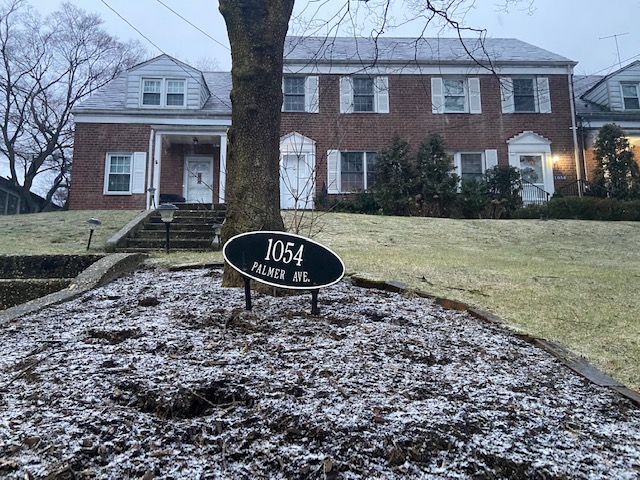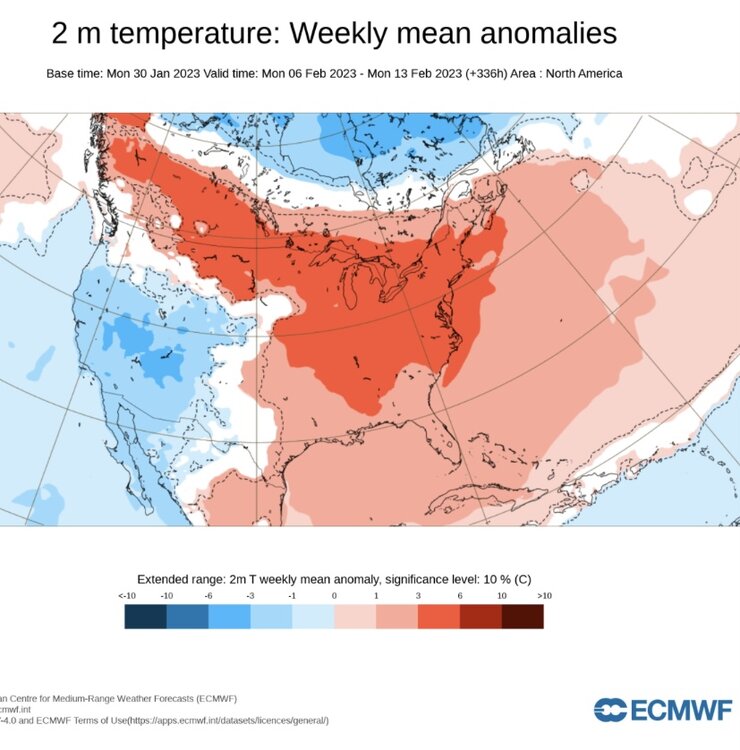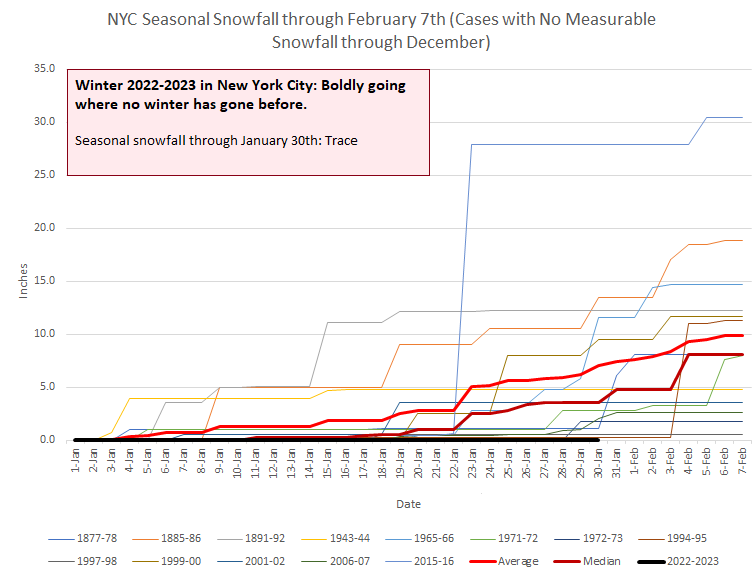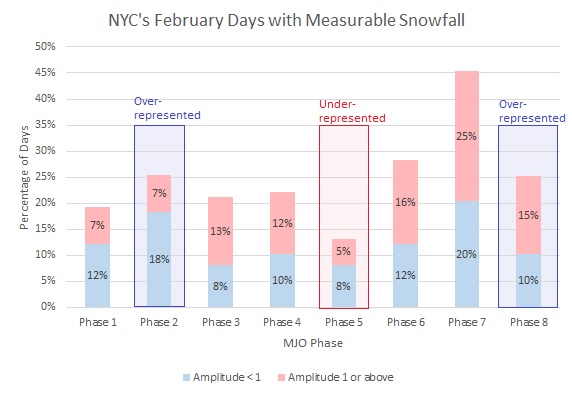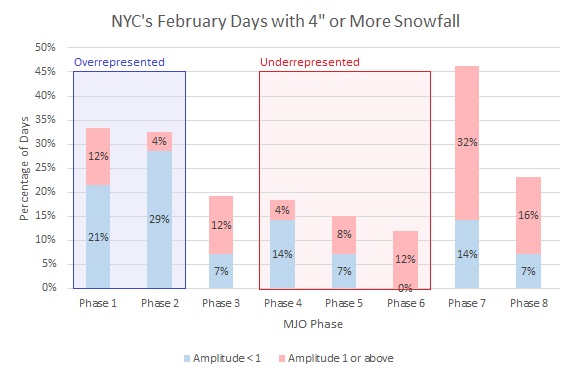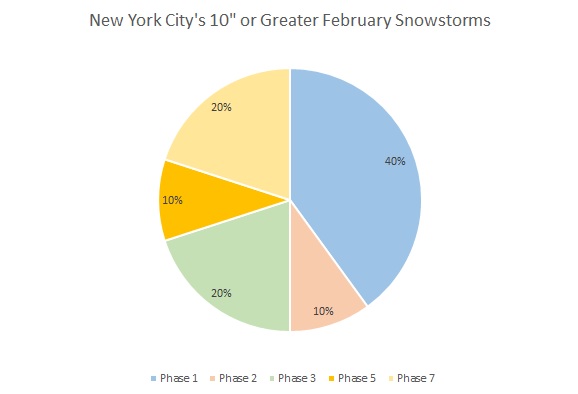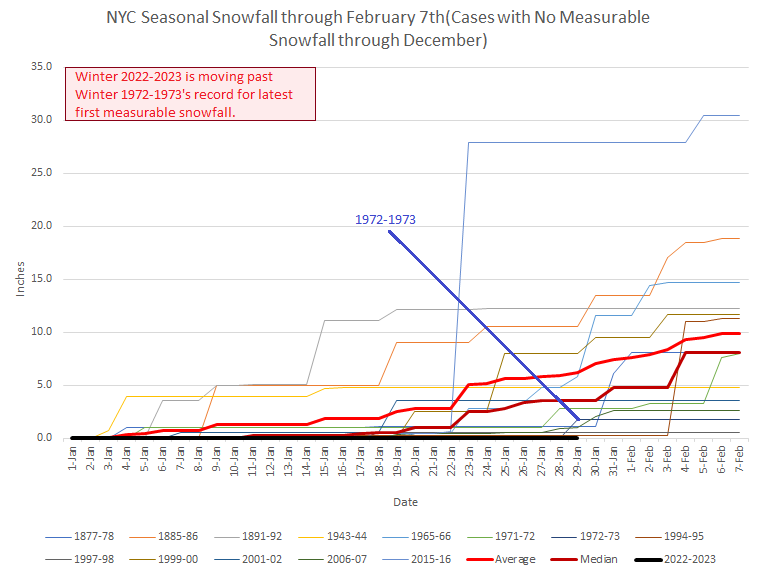-
Posts
22,981 -
Joined
Content Type
Profiles
Blogs
Forums
American Weather
Media Demo
Store
Gallery
Everything posted by donsutherland1
-
-
There is light sleet in Larchmont.
-
2022-23 would move into the lead if they are right. The final standings would depend on how much snow falls in March and April.
-
Morning thoughts… Early showers of rain, sleet, and snow will give way to variably cloudy skies. It will be noticeably cooler than yesterday. High temperatures will reach the upper 30s and lower 40s in most areas. Likely high temperatures around the region include: New York City (Central Park): 40° Newark: 42° Philadelphia: 41° A short but sharp Arctic blast is likely toward the end of the week. Normals: New York City: 30-Year: 39.8°; 15-Year: 40.0° Newark: 30-Year: 40.3°; 15-Year: 40.7°
-
-
It was at least 49° early this morning.
-
15 in 1950. Two years had 14.
-
Yes. That’s going to assure that this will be the warmest January on record.
-
After the short-lived Arctic blast (February 3-4), much of the eastern half of North America will again turn much warmer than normal.
-
That would tie for 4th.
-
With temperatures soaring into the middle 50s, today was New York City's 34th consecutive warmer than normal day. That extended the ongoing record. The prior record of 31 days was set during December 10, 2006 through January 9, 2007. New York City also registered its 11th 40° or above low temperature of the month. That surpassed the old January mark of 10 days, which was set in 1932. Colder air will begin to return to the region late tomorrow. Winter 2022-2023 has now surpassed the record for latest first measurable snowfall in New York City. The old record of January 29th was set in 1973. It is likely that New York City will get through all of January without a measurable snowfall. The developing cooler pattern will last through the week. That pattern will be highlighted by a brief Arctic blast. Saturday could be the coldest day with the temperature rising only into the upper teens and lower 20s during the daytime after a morning low in the single digits in New York City and possibly below zero outside the City. The onset of this cooler period might afford some opportunities for snowfall, but a snowy outcome remains far from certain. Afterward, moderation will likely commence during the second week of the month. The ENSO Region 1+2 anomaly was -0.2°C and the Region 3.4 anomaly was -0.6°C for the week centered around January 25. For the past six weeks, the ENSO Region 1+2 anomaly has averaged -0.32°C and the ENSO Region 3.4 anomaly has averaged -0.70°C. La Niña conditions are beginning to fade and they should evolve to neutral conditions during late winter or early spring. The SOI was +2.78 today. The preliminary Arctic Oscillation (AO) was +1.472 today. On January 28 the MJO was in Phase 3 at an amplitude of 2.299 (RMM). The January 27-adjusted amplitude was 2.067 (RMM). Based on sensitivity analysis applied to the latest guidance, there is an implied near 100% probability that New York City will have a warmer than normal January (1991-2020 normal). January will likely finish with a mean temperature near 43.4° (9.7° above normal). That will make January 2023 the warmest January on record, breaking the record of 43.2°, which was set in January 1932.
-
New York City's February snowfall data by MJO Phase. Underrepresented means that the percentage of days for an MJO phase is less than 80% of climatology; overrepresented means that the percentage of days for an MJO phase is more than 120% of climatology.
-
With the overnight guidance showing a slightly slower arrival of the cooler air tomorrow, the probability that NYC will see its warmest January on record has increased.
-
Morning thoughts… Today will be partly to mostly cloudy and very mild. High temperatures will reach the upper 40s and lower 50s in most areas. Likely high temperatures around the region include: New York City (Central Park): 51° Newark: 53° Philadelphia: 55° Cooler air will return tomorrow. A short Arctic blast is likely toward the end of the week. Normals: New York City: 30-Year: 39.7°; 15-Year: 39.9° Newark: 30-Year: 40.2°; 15-Year: 40.6° Philadelphia: 30-Year: 41.5°; 15-Year: 41.7°
-
-
JFK and Central Park share the 332-day record.
-
The list was latest first measurable snowfall. You’re thinking of the longest stretch without measurable snow.
-
Today’s split was 53-42.
-
Today was New York City's 33rd consecutive warmer than normal day. That extended the ongoing record. The prior record of 31 days was set during December 10, 2006 through January 9, 2007. Today will also be New York City's 10th day this month with a low temperature of 40° or above. That would tied the January record set in 1932. Tomorrow will be another mild day. However, colder air will begin to return to the region late tomorrow. Winter 2022-2023 has now surpassed the record for latest first measurable snowfall in New York City. The old record of January 29th was set in 1973. It is likely that New York City will get through all of January without a measurable snowfall. A cooler pattern will move in during the first week of February and last through the week. That pattern will be highlighted by a brief Arctic blast. Saturday could be the coldest day with the temperature rising only into the upper teens and lower 20s during the daytime after a morning low in the single digits to perhaps lower teens in New York City and possibly near zero outside the City. The onset of this cooler period might afford some opportunities for snowfall, but a snowy outcome remains far from certain. Afterward, moderation will likely commence during the second week of the month. The ENSO Region 1+2 anomaly was -0.3°C and the Region 3.4 anomaly was -0.6°C for the week centered around January 11. For the past six weeks, the ENSO Region 1+2 anomaly has averaged -0.30°C and the ENSO Region 3.4 anomaly has averaged -0.75°C. La Niña conditions are beginning to fade and they should evolve to neutral conditions during late winter or early spring. The SOI was +16.26 today. The preliminary Arctic Oscillation (AO) was +1.729 today. On January 27 the MJO was in Phase 3 at an amplitude of 2.066 (RMM). The January 26-adjusted amplitude was 1.937 (RMM). Based on sensitivity analysis applied to the latest guidance, there is an implied near 100% probability that New York City will have a warmer than normal January (1991-2020 normal). January will likely finish with a mean temperature near 43.0° (9.3° above normal). That will rank January 2023 as the second warmest January on record.
-
As does Central Park.
-
I recall the big sleet storms in 2007.
-
Morning thoughts… Today will be partly cloudy and very mild. High temperatures will reach the lower 50s in most areas. Likely high temperatures around the region include: New York City (Central Park): 52° Newark: 54° Philadelphia: 53° The mild weather will continue through tomorrow before it turns colder. Normals: New York City: 30-Year: 39.6°; 15-Year: 39.9° Newark: 30-Year: 40.1°; 15-Year: 40.6° Philadelphia: 30-Year: 41.4°; 15-Year: 41.6°
-




